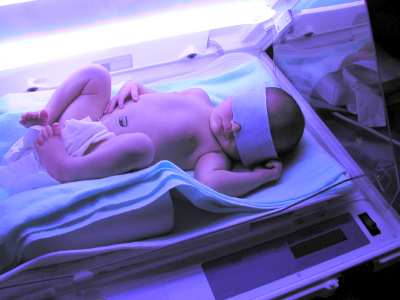
Source: www.breastfeedingbasics.com
Have you ever heard about neonatal jaundice or newborns with a yellow tinge in their skin? In this article, I wish to share information regarding ‘Neonatal Jaundice’ or otherwise known also as jaundice. I hope this information can be beneficial to parents and caretakers.
What is ‘Neonatal Jaundice’ (NNJ) or jaundice?
‘Neonatal’ is defined as infants aged less than a month old and ‘jaundice’ generally refers to when the infants appear ‘yellow’.
In short, NNJ is a condition when a newborn appears yellowish.
Why are the babies yellow?
The yellow discolouration in the skin, white of the eye and mucosal tissue in their mouth is caused by a compound called ‘bilirubin’ in a higher level than normal.
Where does the bilirubin come from?
Bilirubin is a compound present in human red blood cells. Bilirubin is also secreted by the liver, taking part in the digestive system. Thus, a higher bilirubin level can be the result of excessive ‘breaking down’ of red blood cells, releasing bilirubin, or if there is a problem in the hepatic system and its ducts.
Is it normal for babies to turn yellow?
The answer for this question can be ‘yes’ and ‘no’. It depends on the type of bilirubin, time when the baby turns yellow and the level of bilirubin reading in the blood.
Babies do tend to turn yellow. The yellowness usually becomes apparent by the second or third day after birth. Babies become yellow because of the slowly-occurring natural process whereby the body will ‘dump’ the ‘old’ red blood cells (used in the uterine life) and replace them with new red blood cells. The immature liver function also plays a role, leading to yellowness. Bilirubin accumulated in the blood will be excreted from the body via feaces. Hence, it is essential to keep breastfeeding the baby adequately.
Although neonatal jaundice is ‘normal’, an exceedingly high bilirubin level will change this condition into ‘abnormal’. Too high concentration of bilirubin originating from red blood cells (unconjugated bilirubin) is toxic to the baby’s brain cells. This is hazardous because the brain is the command centre for the organism. In very serious cases, it can lead to permanent damage/disability to the brain/nervous system.
Therefore, babies who appear yellow need to be brought to a clinic for examination. Blood will be drawn to assess the type and level of bilirubin. Medical officers will refer to a graph to evaluate the bilirubin level. This graph is important to help the doctors decide whether or not to prescribe a specific treatment. If the bilirubin content is not that high, the baby can be cared for as usual and the parents or caretaker need to ensure the baby is breastfed adequately. A majority of babies with NNJ do not require specific treatment and this condition will resolve by itself.
On the other hand, if treatment is required, the aim is to lower the level of bilirubin. There are two types of treatment, which are; ultraviolet (UV) light phototherapy or blood ‘changing’ process also known as ‘exchange transfusion’. The method of treatment depends on the bilirubin level. Parents’ sensitivity and urgency to go for checkup is vital in preventing dangerous/life-threatening jaundice conditions.
What it’s the normal duration for NNJ?
Neonatal jaundice can be regarded as normal if the level of bilirubin (unconjugated type) is not too elevated and the baby is still within 14 days of life for term babies and 21 days for preterm babies. If the baby is still yellowish after that time period, examinations need to be done to make sure the jaundice is not caused by other health problems.
Breastfed babies can appear yellowish for a longer period of time because of the liver maturity factor but this condition does not warrant any treatment and will subside eventually. Hopefully this will not become a reason for parents or caretakers to stop giving breast milk and change to formula milk. Exclusive breastfeeding is the best and ultimate for the baby even though the baby is yellow, unless specifically advised by the doctor to do otherwise. Mother’s milk is suitable for all babies except for a small number of specific cases.
When is the jaundice abnormal?
- Jaundice appearing too early (in a matter of hours after birth);
- Bilirubin level is too high;
- If the baby is yellow and presence of other signs i.e. dark coloured urine and pale coloured feces – indicating a problem in the hepatic system;
- If the high level bilirubin comes from the component related to the liver (conjugated bilirubin) – this can be determined by the doctor from blood test results; and
- Jaundice caused by infections or other health problems.
Conclusion
Prevention is better than cure. Not delaying in getting your baby checked can reduce the complications of jaundice. While jaundice is a common thing in newborns, it can become serious if not given due observations. Keep to the advices given by the medical officers after the baby is permitted to go home. Avoid giving the baby other fluids (e.g: plain water, fruit juice, rice water) except breast milk. Ingesting some traditional preparations by mothers who are still breastfeeding is also related to elevated level of bilirubin in babies. Due to that, doctors will usually discourage traditional preparations in cases of NNJ.
Dr. Alya Hamzah is a pediatrics MO, working in Selangor and is preparing herself for her post-graduated pediatrics examination. She believes that the road to better health should be traveled together by the doctors and patients. Get to know her more in The Team page. This article was translated by Azizul Ismie from https://www.mmgazette.com/bayi-yang-kuning-dr-alya-hamzah/
[This article belongs to The Malaysian Medical Gazette. Any republication (online or offline) without written permission from The Malaysian Medical Gazette is prohibited.]
